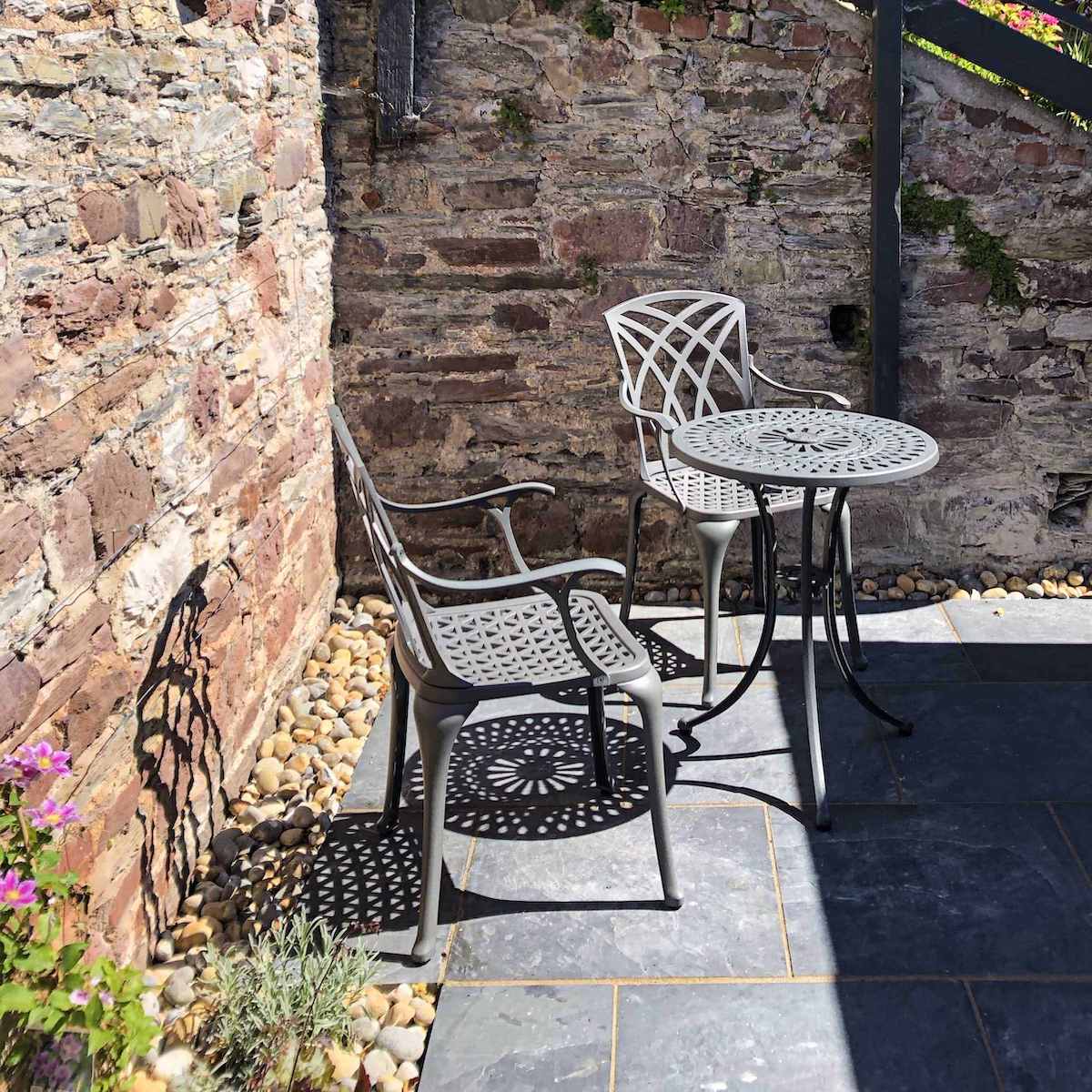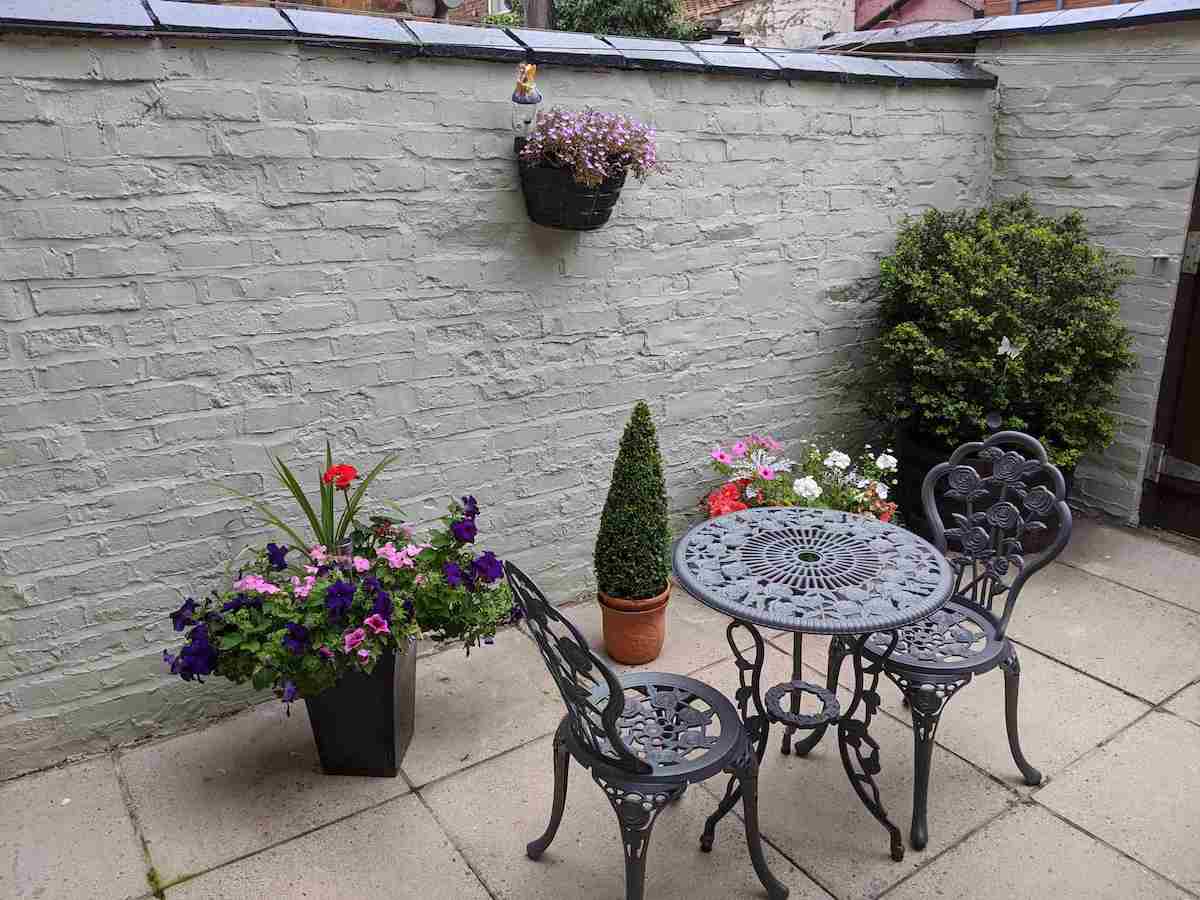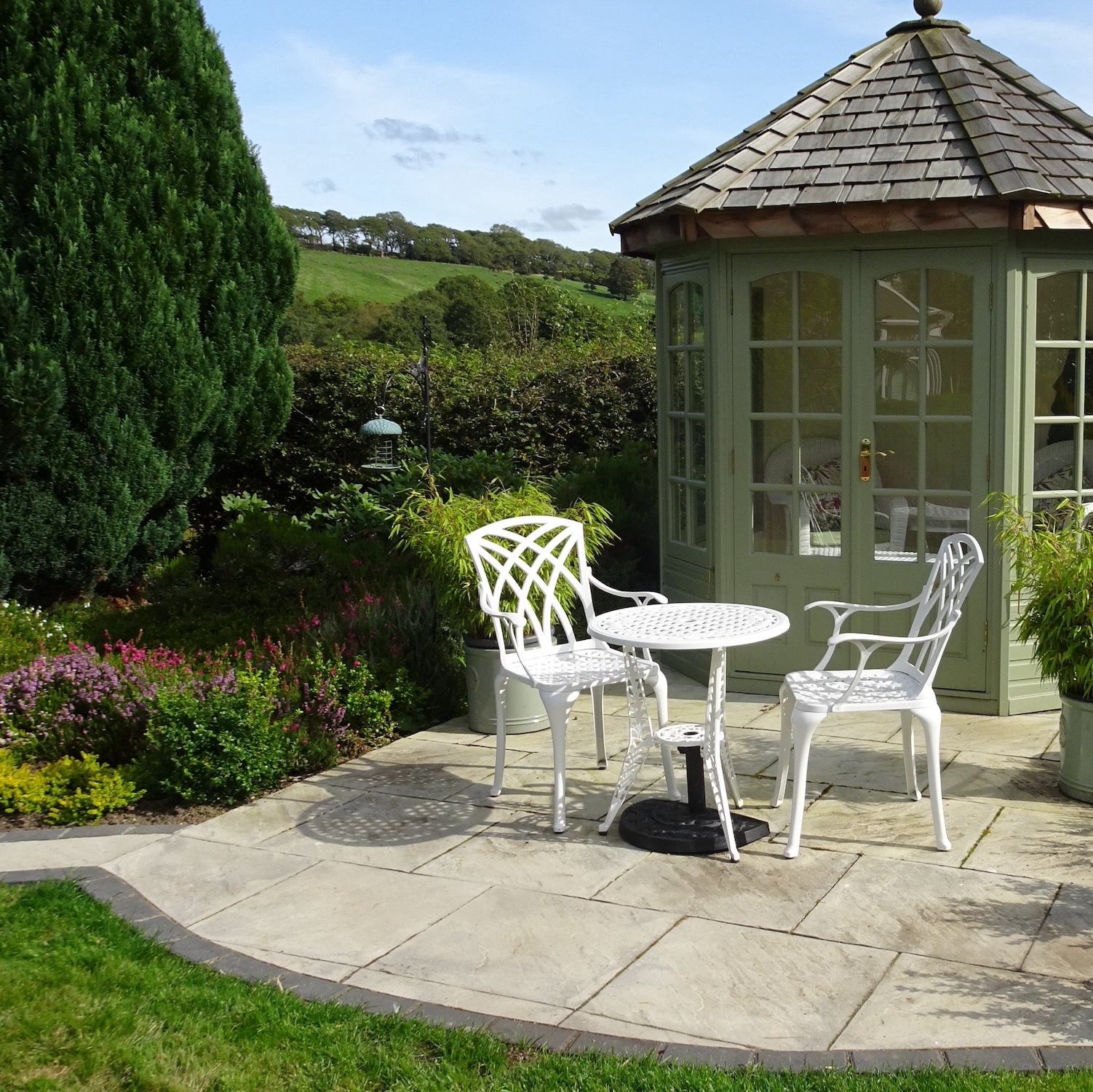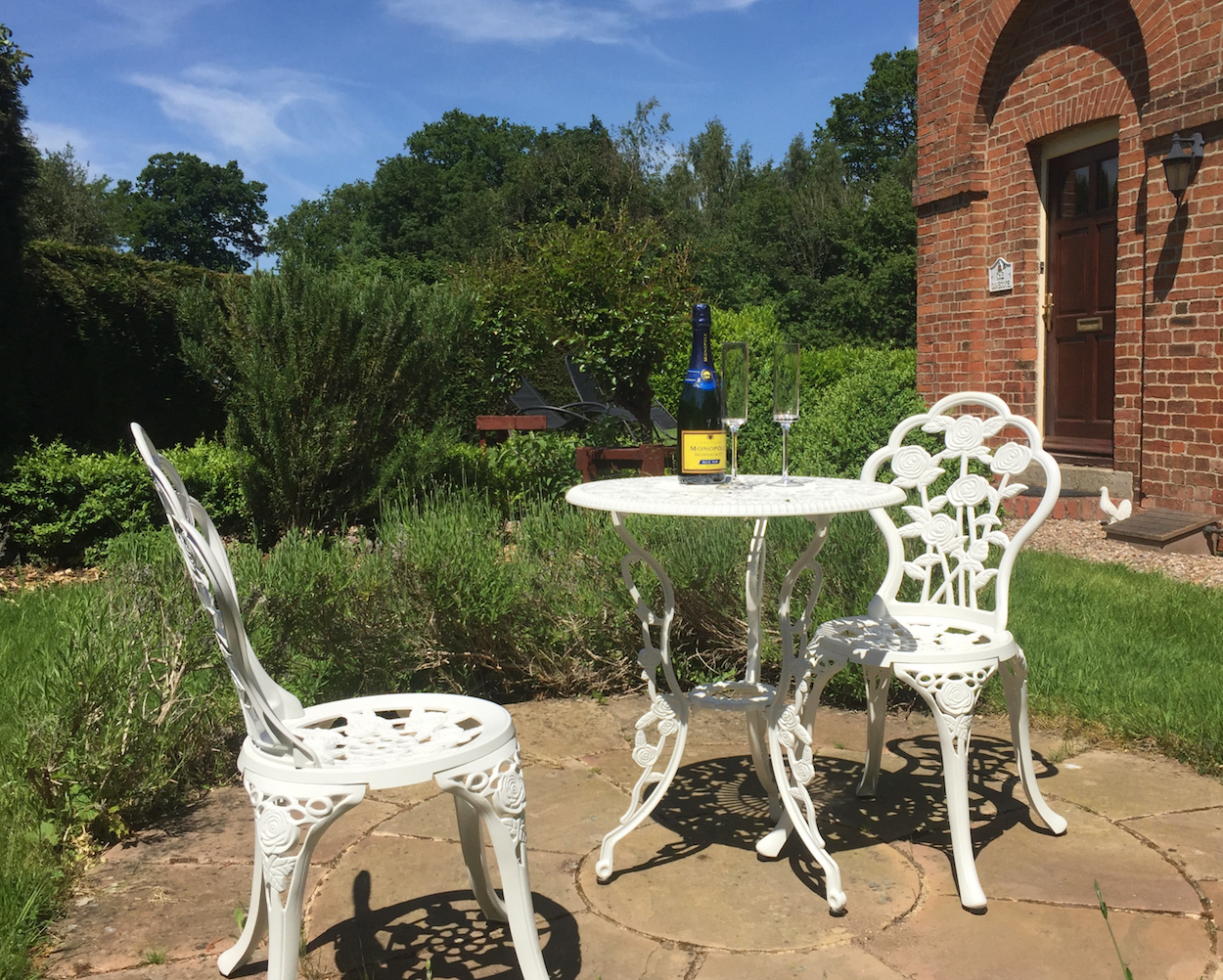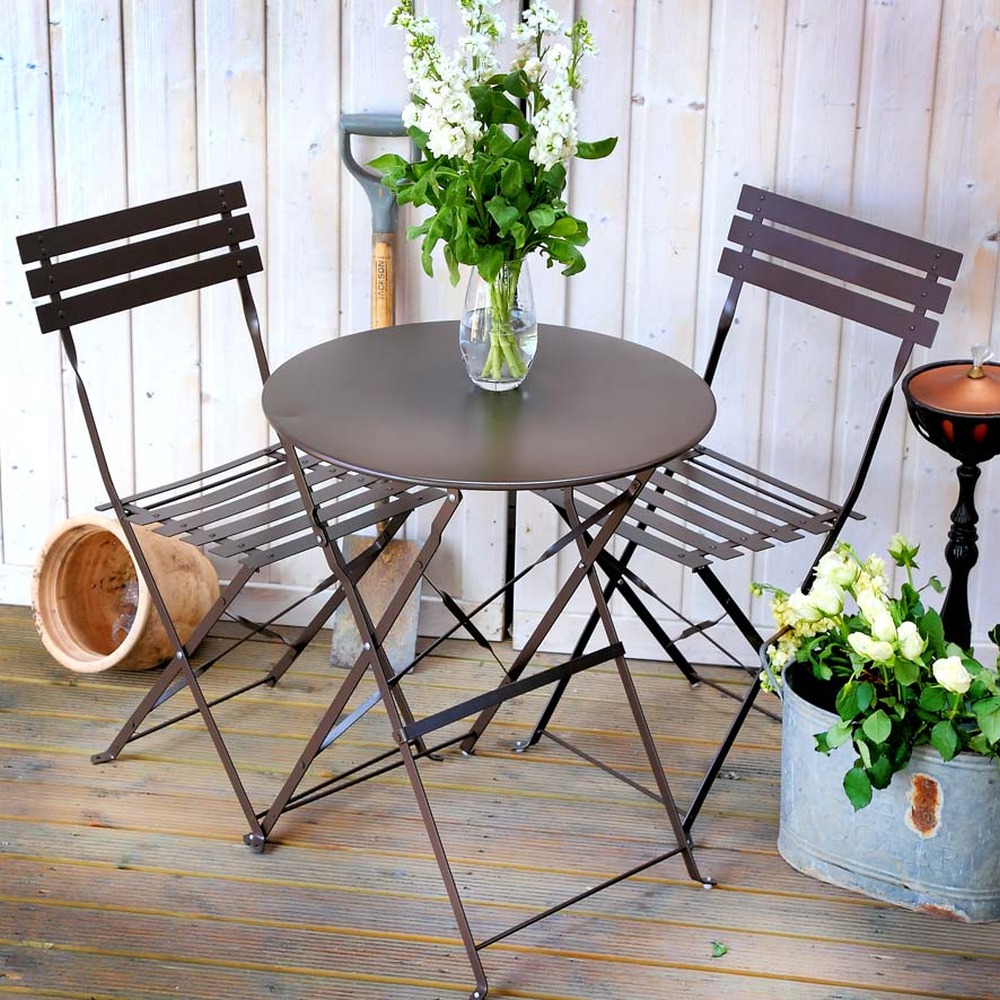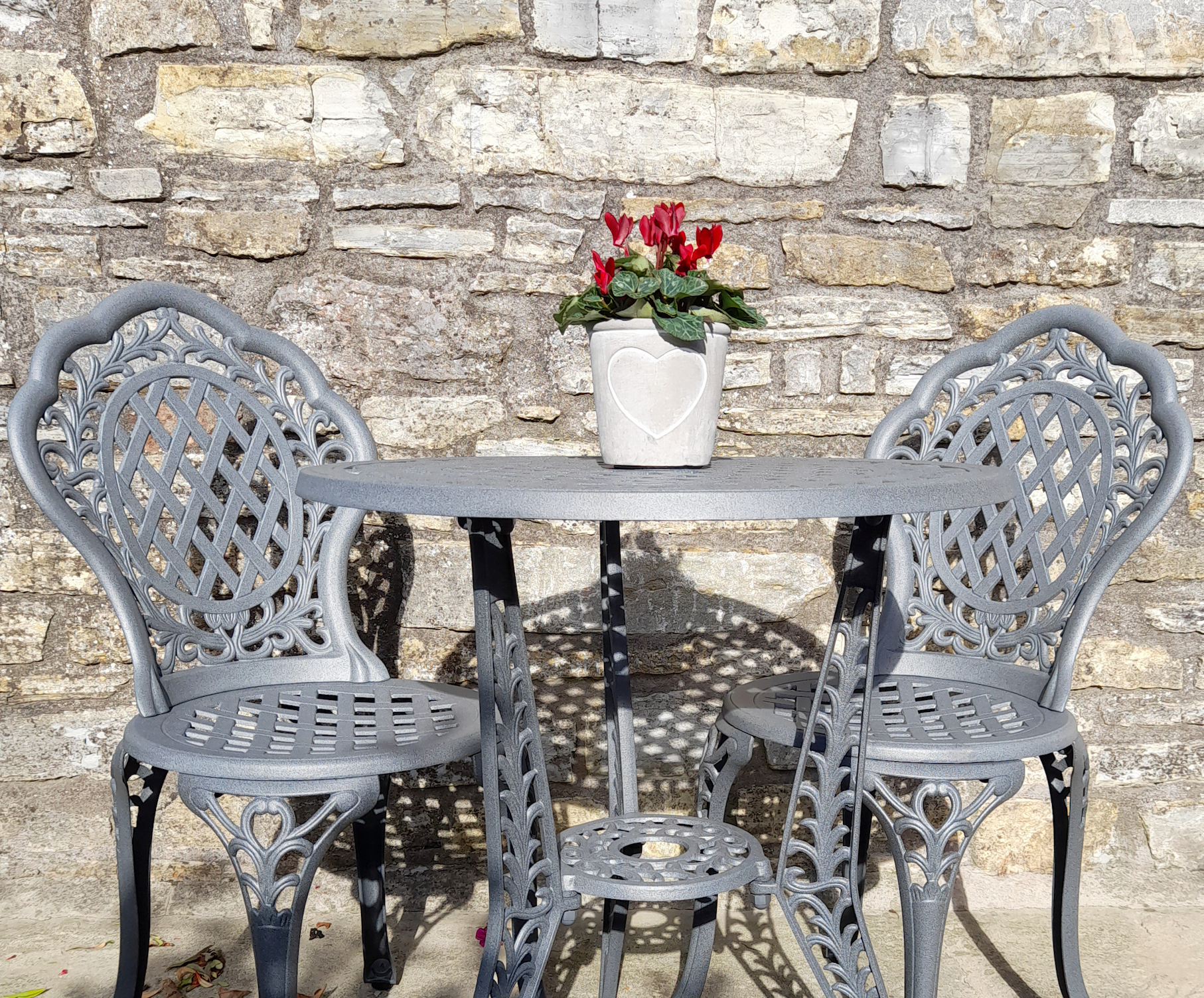We recently published a comprehensive overview of bistros in our how to choose the right garden bistro set and in that we touched on their history by stating that they were traditionally associated with the chic bistros of Paris:
“These intimate 2-seater tables were the perfect size for savvy cafe owners looking to offer a spot outside, whereby people could enjoy the sunshine and share a bite to eat or a bottle of wine together.”
Our history of metal garden furniture and the origins of the Lazy Susan posts have both proven to be extremely popular with our visitors too, so we thought it would be nice to give the garden bistro the same treatment.
After all, it is a type and style of outdoor furniture that’s endured, and for good reason. The 2-seater bistro table is still to this day one of our best-selling sets, and it has a fascinating etymology and complex backstory.
What is a bistro set?
What was initially designed for compact sidewalks, the bistro table is perfectly suited to small decks, terraces gardens, balconies or backyard-style patio areas where space is limited or the need is sit-down dining for two.
At Lazy Susan, our range of bistros is carefully crafted to make the most of a tight space but still pack in plenty of patio versatility and functionality.
The Interior Design School define a garden bistro set as:
“A bistro table is a small, round table about 40″ in height, designed for smaller gardens and intimate dining. It is common for people to also refer to bistro tables as pub tables. They originated in Parisian cafes in the early 1800s. These cafes were typically small, with limited seating, so they needed smaller tables that would maximize space. The term “bistro” comes from the French word “Bistrot”, meaning “fast” or “quick”. This reflects the cafe culture of Paris, where people will stop in for a quick bite or drink before moving on with their day.”
While leading UK hire company BE Furniture appears top of the search results in Google with their perfect definition:
“A bistro table is a small table that is traditionally a 24 inch round tabletop with a height of just under 30 inches. The basic bistro table version comes with two matching chairs and can be manufactured in a wide variety of materials, designs, and colours.”
We recently looked at how to create an intimate outdoor space with a garden bistro table and in that article, we defined a bistro table with the following key design features and characteristics:
-
Compact Size
-
2-Seater
-
Recessed Legs
-
Metal Construction
-
Round Tabletop
-
Timeless Design
-
Weather-Resistant
What is the etymology of the word bistro?
Many leading historians believe the term "bistro" originally came from the Russian word “bistra", which translates to mean hurry, quick, or fast.
One argument is that when Russian Emperor Alexander followed Napoleon back to France and briefly occupied Paris, his officers liked to frequent many of the small restaurants that served quick meals, snacks and drinks.
People took to calling these cafe-like establishments bistros as, when irritated by the slowness of French waiters, the officers would shout "bis-tro" or “быстро” as in “hurry up”.
Other historians suggest the etymology of the name is in fact the other way round and came from the French Hussars of the Grande Armée who frequented said same taverns.
On Napoleon.org they state in their glossary that:
“The Cossacks were keen to avoid the company of the incoming foreign soldiers, would hasten to finish their drinks. The Russian word “bistra” – meaning “quick” – would fill the air, and the French soldiers, with little understanding of the language of Tolstoy, took to referring to these bars as places where they say “bistra”. This evolved into “bistro”, and subsequently “bistrot”, following the Grande Armée's return to France, and was used to refer to cafés, bars, and places where drinks were consumed.”
Many French linguists believe the origins of the word actually have nothing to do with either the Russian or French soldiers at all.
They claim that words with similar roots existed in France long before any military influence and that according to one common theory among linguisticians, the word bistro was in fact taken from the word “bistraud”, which, in the regional Poitou dialect, means “assistant of the wine seller”.
Others connect bistro to the similar word “bistingo”, which means a tavern or motel where travellers would spend the night or to the words “bistrouille” or “bistouille”, which refers to an alcoholic drink of poor quality.
There’s clearly a number of French words from which it is more likely to have derived over the years. However, the word’s true etymology, like many, is difficult to trace.
The latter are probably the more likely source in our opinion as the Russian occupation was brief and their officers were required to speak impeccable French.
Where did the garden bistro set come from?
Much like the origin of the name, any inventor of the bistro table is certainly lost to the sands of time.
That said, rather than having a single inventor, it is more likely it is a design that was adapted and evolved over time from numerous sources and materials, with many individuals contributing to the development.
Some of the earliest known examples of this type of set are the marble-topped tables that were used in the early street cafes of Paris in the late 1600s.
The first bistro cafés were intimate, family-owned, and served simple food and wine. Known for their casual atmosphere and outdoor seating, they slotted in somewhere between a café and a restaurant.
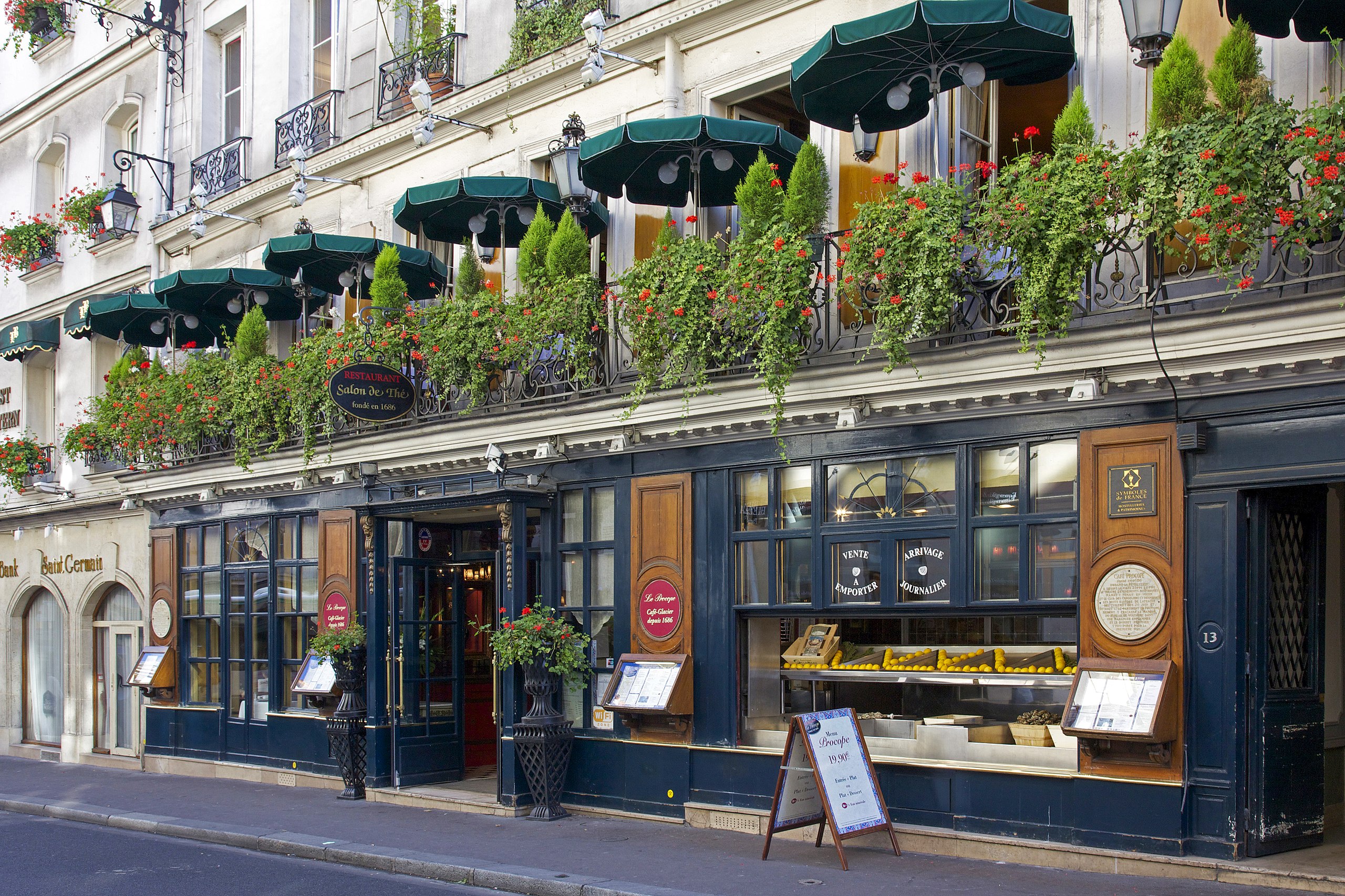
Image Source: Café Procope in 2010 from Wikipedia.
The first to open is believed to be the Café Procope in Paris (pictured above).
Opened in 1686 by the Sicilian chef Procopio Cutò on the Rue de l'Ancienne Comédie, it differed from the popular taverns of the time and, according to Wikipedia, it was known as a place where:
“Gentlemen of fashion might drink coffee, the exotic beverage that had previously been served in taverns, or eat a sorbet, served up in porcelain cups by waiters in exotic Armenian garb.”
It quickly established itself as a hub of the Parisian artistic and literary community in the 18th and 19th centuries, and even Napoleon was known to be a frequent patron.
The development of bistro-style tables certainly ran in parallel to the rise of this French café culture in the later part of the 1600s.
Many historians also note the use of simple wrought iron sets with marble tops being the material of choice in these fashionable eateries.
The French taste for the finer things would certainly have necessitated that bistro furniture be both elegant and functional, but a solid, high-quality wood would also have certainly been a popular choice of early material at this time.
The Industrial Revolution brought more decorative design elements to the fore, making metal more readily available. The go-to wrought iron bases could also be cast to reduce the cost and make them more readily available.
Much like the modern sets we sell today, they were typically small, round, 2-seater tables, and the combination of iron and marble made them durable and suitable for outdoor use.
The big problem with wrought and marble or even the later cast iron is the cost and weight, so as French cafe culture grew, so too did the need for more cost-effective and practical solutions.
One of the most influential figures in the development of the bistro table was German-Austrian furniture maker Michael Thonet.
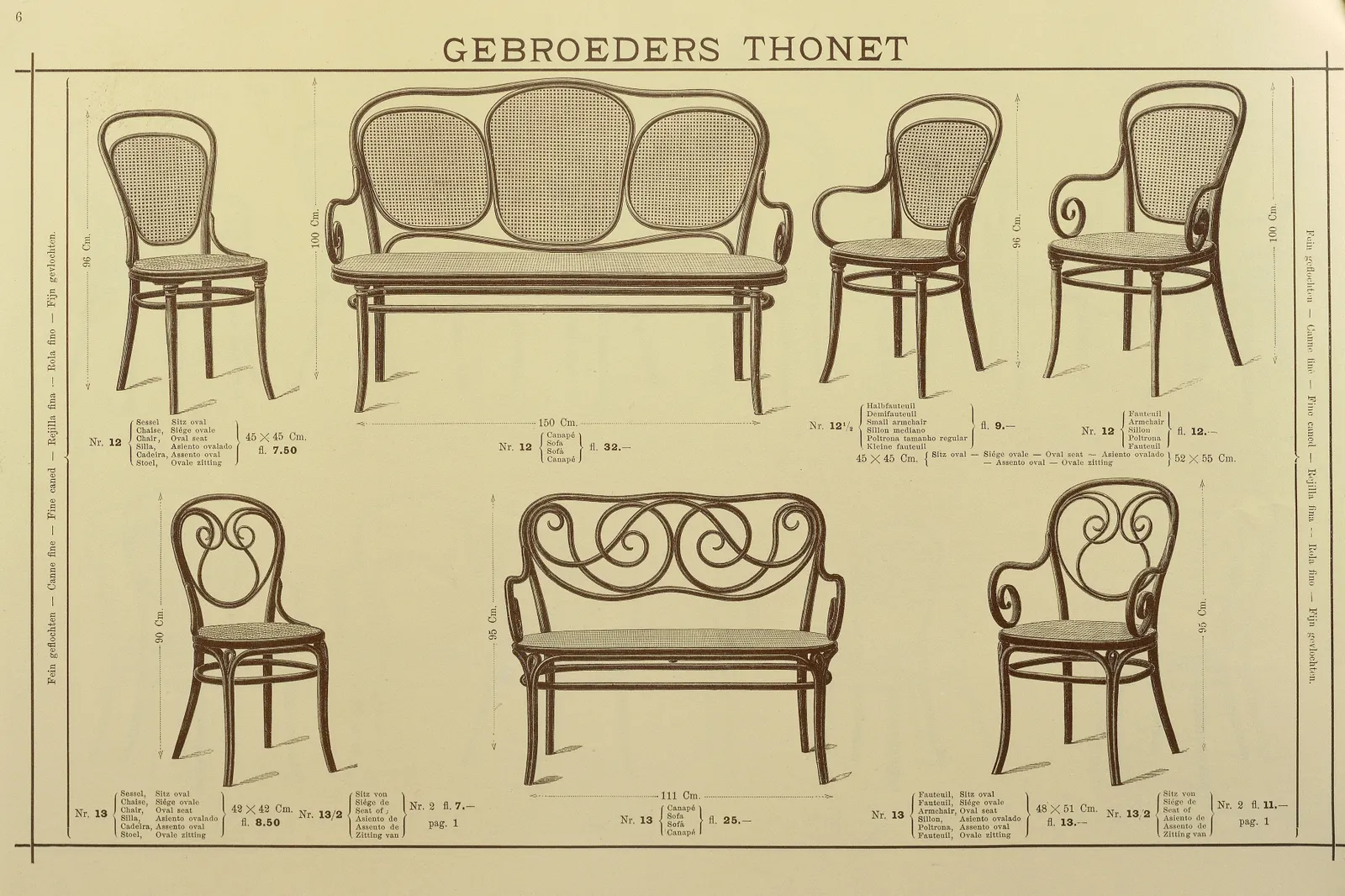
Image Source: A 19th-century Thonet catalogue shows off chairs and sofas, and specifically, No. 12 and No. 13 models—the predecessors to the more famous No. 14 chair from Architectural Digest.
In 1859, he patented his No. 14 bent-wood bistro chair, which is arguably the first ever mass-produced piece of furniture (pictured above).
Another important figure in the development of the bistro set was designer Édouard Leclerc.
In 1889, he patented his “Simplex” folding metal chair, and its clear design influence can still be found today on the streets of Paris and in our own Alessia set (pictured below).
Arguably, the bistro table reached its peak of popularity in the early 20th century.
This was a time of great social change in France, and it became a symbol of their strive for a more laidback culture and as a way to bring people closer together.
Today, the bistro table is still a popular choice for both indoor and outdoor use. It is a highly versatile and stylish piece that still resonates with Lazy Susan customers.
Why have metal bistro sets remained so popular?
And whilst it is still available in a range of materials like timber and rattan, the outdoor bistro set is still synonymous with metal.
Today, bistro sets continue to be widely used, appreciated for their versatility, and are one of the best-selling garden furniture set sizes here at Lazy Susan.
Whilst the material we use is modern, much of our metal casting process and the style of our collection is timeless, and it encapsulates all of the charm and ambience of a traditional French bistro.
Our garden furniture collection is available in a range of styles, table sizes and colours, so we're sure you can find the perfect 2-seater set in our shop to match your taste, how you like to use your outdoor space and the décor of your home and garden.




